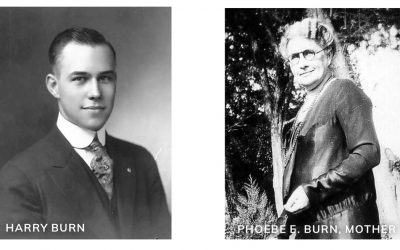The major civic ancestor for San Luis Obispo—both county and city—was born on September 1, 1772. In a hastily conducted ceremony, Fra Junipero Serra intonated the ritual es- tablishing the fifth outpost in the spiritual “conquest” of Alta California. Understandably impatient, his military superior, Lt. Pedro Fages, was intent on reaching San Diego for desperately needed supplies.
The civic chronology included the famous bear hunt earlier in the summer that had not provided more than a temporary pause in the cycle of hunger and prayer. The bears of Los Osos survived; hunger continued. From a crudely made flag for the short-lived Bear Flag Revolt to permanency on the state flag, the ferocious beasts continue as a modern reminder of the state’s historical roots.
The cycle of desperation and deprivation will ease as the mission, dedicated to a French saint, grew in population and productivity. Carefully maintained records from 1772 to 1832 enumerate sacred events: births, marriages and deaths as well as crop and livestock productions reaching record levels around 1820.
In the meanwhile, a cataclysmic shift in lineage changed Alta forever. An insurrection, begun in New Spain in 1810, rippled through time and events and finally engulfed the pastoral outpost.
The story continues.
The new Mexican Empire was intent upon bringing about the secularization of the then 20 missions. It began with more than proclamations as huge grants of land reduced mission geography and cultivated an often-romanticized era of the ranchos. With its own heritage, there are still remnants today of the residents of the hacienda. In a tale of escalating destruction, the previous half-century was often reduced to memories and mayhem. Population became more diverse while missions and natives along the central coast faded into the landscape while two seismic civil earthquakes would once again greatly influence the territory’s genealogy including a somnolent central coast.
The civic chronology included the famous bear hunt earlier in the summer that had not provided more than a temporary pause in the cycle of hunger and prayer. The bears of Los Osos survived; hunger continued. From a crudely made flag for the short-lived Bear Flag Revolt to permanency on the state flag, the ferocious beasts continue as a modern reminder of the state’s historical roots.
The cycle of desperation and deprivation will ease as the mission, dedicated to a French saint, grew in population and productivity. Carefully maintained records from 1772 to 1832 enumerate sacred events: births, marriages and deaths as well as crop and livestock productions reaching record levels around 1820.
In the meanwhile, a cataclysmic shift in lineage changed Alta forever. An insurrection, begun in New Spain in 1810, rippled through time and events and finally engulfed the pastoral outpost.
The story continues.
The new Mexican Empire was intent upon bringing about the secularization of the then 20 missions. It began with more than proclamations as huge grants of land reduced mission geography and cultivated an often-romanticized era of the ranchos. With its own heritage, there are still remnants today of the residents of the hacienda. In a tale of escalating destruction, the previous half-century was often reduced to memories and mayhem. Population became more diverse while missions and natives along the central coast faded into the landscape while two seismic civil earthquakes would once again greatly influence the territory’s genealogy including a somnolent central coast.
By the mid-1840s, there were few who would remember mission days as often- lackluster governance from the capital in Mexico City produced a generation who had no ties to imperial Spain and few to the new nation of Mexico. By then, prime mission lands had been transformed into great ranchos, the population continued to expand while political machinations produced yet another war resulting in a huge portion of the Spanish/Mexican nation embraced in the arms of Uncle Sam.
After a largely ignored conflict in contemporary literature, the Mexi- can-American War reached a formal conclusion with the signing of the Treaty of Guadalupe Hidalgo on February 2, 1848. The former mission at the center of the state was considered a pueblo with a community church. In their lifetime, some residents had been citizens of Spain then Mexico and, now, the United States.
Locally, a prominent figure in American his- tory, John C. Fremont, “invaded” the pueblo. The future senator from California decided not to execute an errant resident, Jose de Jesus Pico. Instead, the much-relieved Pico accompanied the commander to assist in eventually ending hostilities in the raging Mexican-American War in California.
In one of those dazzling historical dramas, nine days before the signing of the peace treaty, gold was discovered on the American River. As if caught downstream from a bursting dam, California was inundated with strangers intent with neither permanence nor governance…but wealth.
After a largely ignored conflict in contemporary literature, the Mexi- can-American War reached a formal conclusion with the signing of the Treaty of Guadalupe Hidalgo on February 2, 1848. The former mission at the center of the state was considered a pueblo with a community church. In their lifetime, some residents had been citizens of Spain then Mexico and, now, the United States.
Locally, a prominent figure in American his- tory, John C. Fremont, “invaded” the pueblo. The future senator from California decided not to execute an errant resident, Jose de Jesus Pico. Instead, the much-relieved Pico accompanied the commander to assist in eventually ending hostilities in the raging Mexican-American War in California.
In one of those dazzling historical dramas, nine days before the signing of the peace treaty, gold was discovered on the American River. As if caught downstream from a bursting dam, California was inundated with strangers intent with neither permanence nor governance…but wealth.
Local ancestry now had new members as an American government required a different bureaucracy. With a fledgling state government committed to addressing virtually every aspect of life via county government, enclaves
of residents within this county struggled for corporate identity.
There had been attempts to simply recognize the mission site as a former pueblo and grant corporate boundaries as had been done with other Mexican designations, especially San Francisco. This did not happen and it was not until six years after statehood on February 19, 1856, the Town of San Luis Obispo was formally recognized by the state solons.
It was not much of a recognition. The legislature was in session for limited amounts of time, the elected had other pursuits unlike most of those elected today, and—given the small population—San Luis Obispo, other than the county, did not require much attention. The federal government had conducted an official survey of the state and the metes and bounds description—embraced by surveyors and civil engineers, but a mystery to all others—declared the community contained “two square miles.” At least, it was a start in staking the small enclave’s physical location in the evolving state. The legislative act was akin to a municipal birth certificate.
What records exist do not paint a picture of an enthusiastic population eager for recognition in a new state that would expand in population from under a hundred thousand to over a half-million twenty years later. Designated as a “cow county,” the agriculture-driven county served the dietary needs of the hordes invading the north in search of the elusive gold. In a hodgepodge of humanity, some became immensely wealthy; most were, at best, disappointed while many found their quest the last in this life. Indeed, a hallmark of the 1850s was the rampant violence. With public safety more an illusion than a reality, the new town soon resorted to its own means of security. Civic development became essentially a matter of survival.
The community prevailed and some twenty years later, the small town reached municipal adulthood with a formal proclamation establishing the city on March 20, 1876.
In the meanwhile, the required accouterments of governance developed as leaders were chosen, increasing ordinances and resolutions were required along with the insatiable need for the public to fund the activities and rules of the community. While official documents are rare, Minutes of the governing body from 1870 are preserved today.
In most often beautiful penmanship, the demands and solutions of the community’s “family” life intrigue the modern reader. With the introduction of the newspaper in 1868, community genealogy becomes much easier…if not more complicated…to trace.
of residents within this county struggled for corporate identity.
There had been attempts to simply recognize the mission site as a former pueblo and grant corporate boundaries as had been done with other Mexican designations, especially San Francisco. This did not happen and it was not until six years after statehood on February 19, 1856, the Town of San Luis Obispo was formally recognized by the state solons.
It was not much of a recognition. The legislature was in session for limited amounts of time, the elected had other pursuits unlike most of those elected today, and—given the small population—San Luis Obispo, other than the county, did not require much attention. The federal government had conducted an official survey of the state and the metes and bounds description—embraced by surveyors and civil engineers, but a mystery to all others—declared the community contained “two square miles.” At least, it was a start in staking the small enclave’s physical location in the evolving state. The legislative act was akin to a municipal birth certificate.
What records exist do not paint a picture of an enthusiastic population eager for recognition in a new state that would expand in population from under a hundred thousand to over a half-million twenty years later. Designated as a “cow county,” the agriculture-driven county served the dietary needs of the hordes invading the north in search of the elusive gold. In a hodgepodge of humanity, some became immensely wealthy; most were, at best, disappointed while many found their quest the last in this life. Indeed, a hallmark of the 1850s was the rampant violence. With public safety more an illusion than a reality, the new town soon resorted to its own means of security. Civic development became essentially a matter of survival.
The community prevailed and some twenty years later, the small town reached municipal adulthood with a formal proclamation establishing the city on March 20, 1876.
In the meanwhile, the required accouterments of governance developed as leaders were chosen, increasing ordinances and resolutions were required along with the insatiable need for the public to fund the activities and rules of the community. While official documents are rare, Minutes of the governing body from 1870 are preserved today.
In most often beautiful penmanship, the demands and solutions of the community’s “family” life intrigue the modern reader. With the introduction of the newspaper in 1868, community genealogy becomes much easier…if not more complicated…to trace.
Of course, much will occur as the community grows slowly amid the burgeoning state and nation. The arrival of the railroad (1894), world wars, lesser designated conflicts, “movements,” moments of civic pride (as well as shame), the fodder of local history will require a more intense investigation of local ancestry.
At this point, however, it’s best to remember the genealogy of a civic past that resonates to this day and, undoubtedly, in the future.
At this point, however, it’s best to remember the genealogy of a civic past that resonates to this day and, undoubtedly, in the future.





